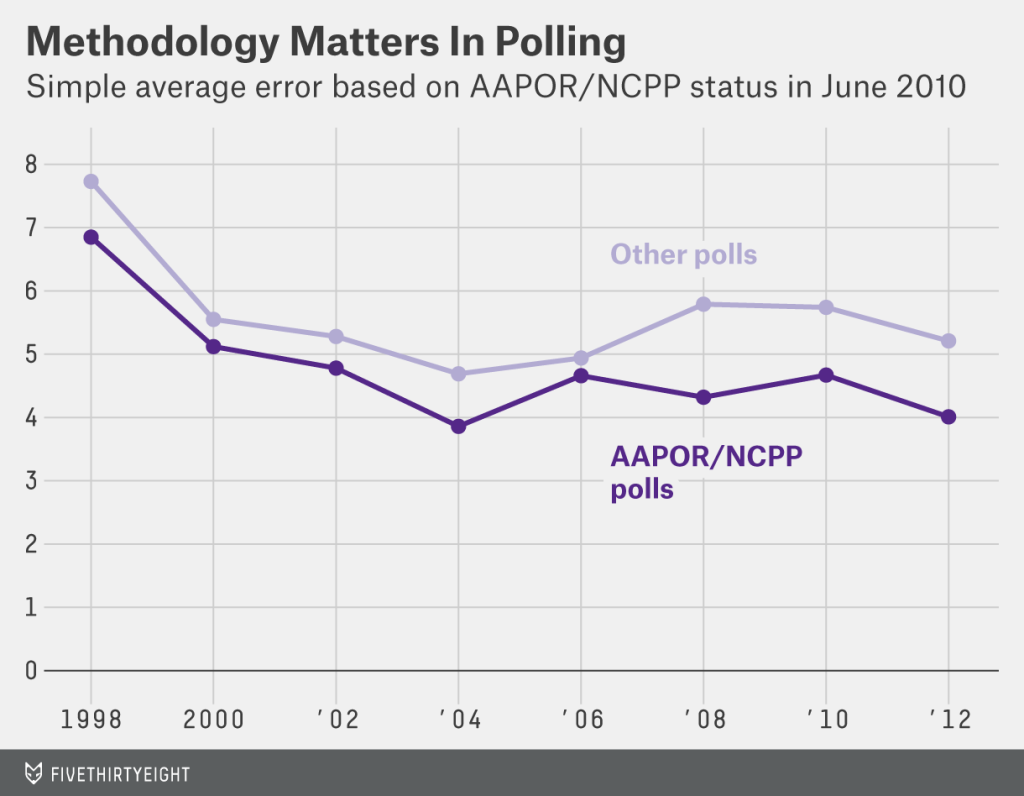Is Transparency Worth Its Reputation?
By NRC on May 8, 2015

Government transparency is short hand for management that is accountable, welcoming and honest. Transparent government is good government with expected outcomes like more fairness, economic strength, citizen engagement and quality of life for residents. These anticipated outcomes are to be admired even if only imagined.
One can conjure a county or even a country where government is honest and welcoming but where things, nevertheless, aren’t so good. I suspect residents of many American cities have elected neighbors who are both transparent and inept. So the positive aspects of transparency may be given, but the outcomes of transparency are promises waiting to be proven.
From a recent and unusual study, evidence shows that transparency is effective in one aspect of modern-day governance: public opinion research. Transparency in opinion surveys is about full disclosure of methods so that readers can determine the quality of the study, answering questions such as:
- Who sponsored the study?
- What exactly was the wording of the survey questions?
- How many people were contacted to get the number of respondents who participated?
- What were the dates of data collection?
Transparent research should be more credible because full disclosure of methods builds reader trust. Transparent research should be better research because the unforgiving lens of scrutiny will urge researchers to be most careful.
The American Association of Public Opinion Research (AAPOR) has created a Transparency Initiative (TI) which requires members to adhere to a set of specifications for reporting key aspects of the survey process. A recent study that examined the accuracy of surveys done by members or supporters of the TI provided evidence that transparent surveys were better than surveys that were not transparent. (Truth in reporting, this author’s company is a member of the TI.)
I’ve written elsewhere about how survey accuracy generally is determined. With polling companies in the businesses of determining voter intentions and the vote itself, it is possible to see which companies have come closer to the vote predicted by their surveys.
Nate Silver, the polling guru, published the study comparing the track record of ‘transparent’ polling firms to those that were not members of the AAPOR TI (or another organization whose members are expected to show high standards in polling, National Council on Public Polls (NCPP). Remarkably, transparent polls have made better voting predictions not only recently, but since the study date’s onset in 1998. (See chart below)
Linking important processes to fundamental outcomes often proves to be an exasperating task. Proving that transparent government leads to better quality of community life may be as tough as establishing a link between eating good food and living a long life. So it is noticeable that transparency in survey research does lead to demonstrably more accurate results. The proof comes from an independent researcher with no path to aggrandizement, whatever the research outcome.
Related Articles
Popular posts
Sign-up for Updates
You May Also Like
These Related Stories

How Do Parties at Work Impact Employee Engagement?
The Complete Guide to Polco Live


